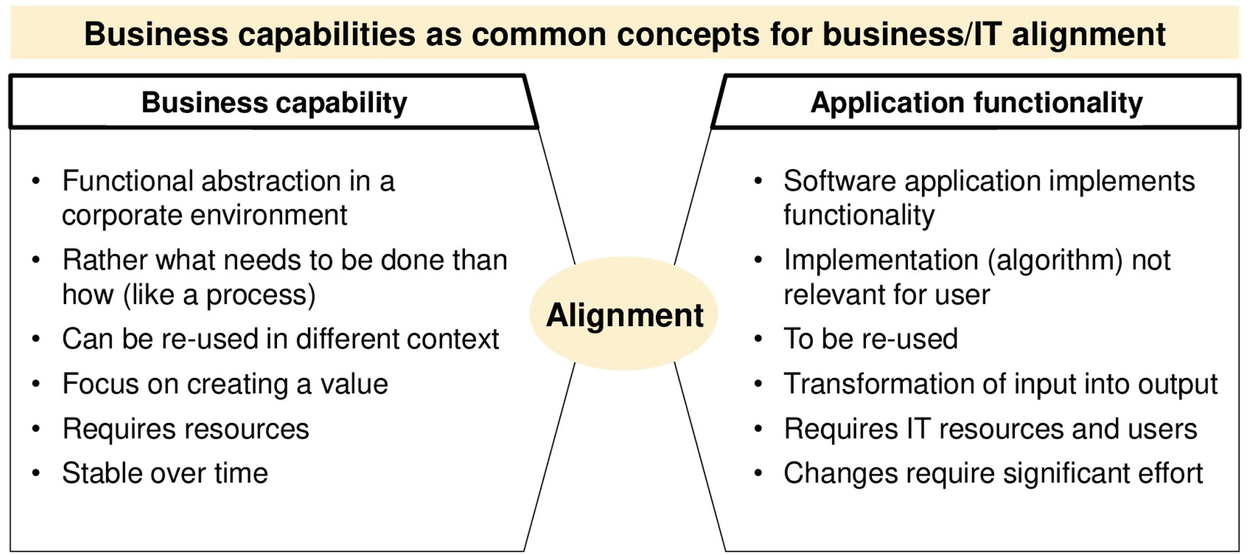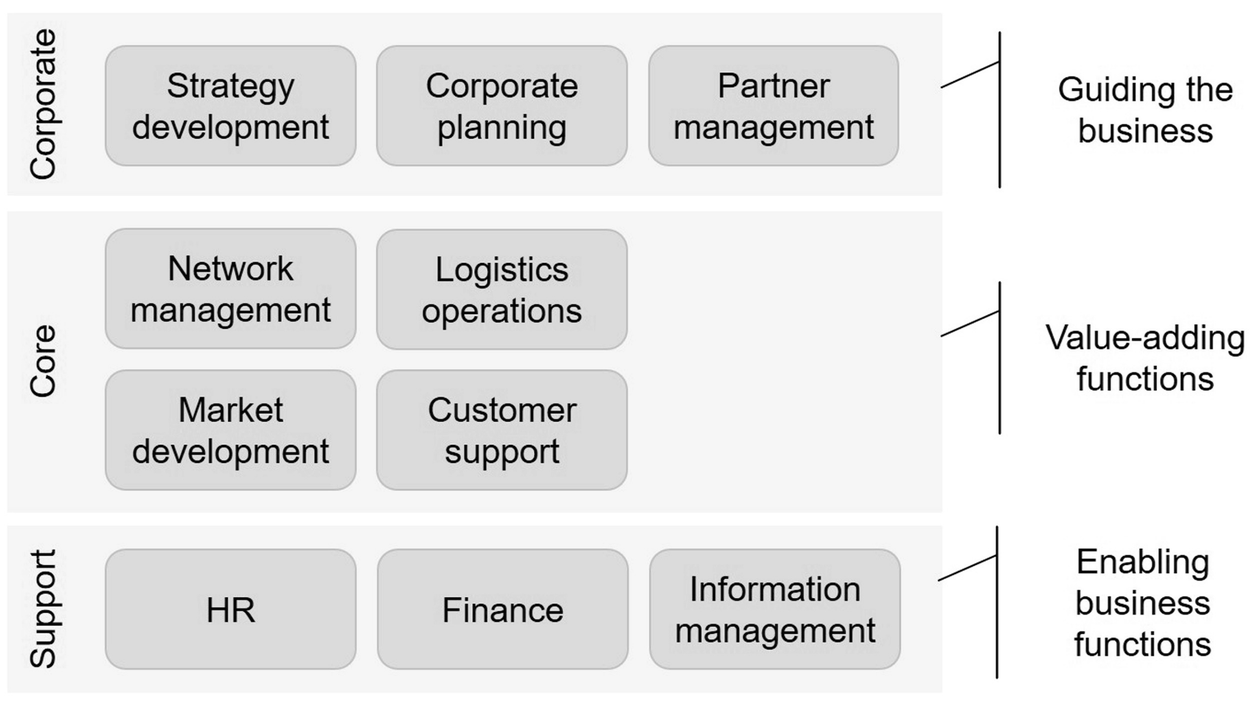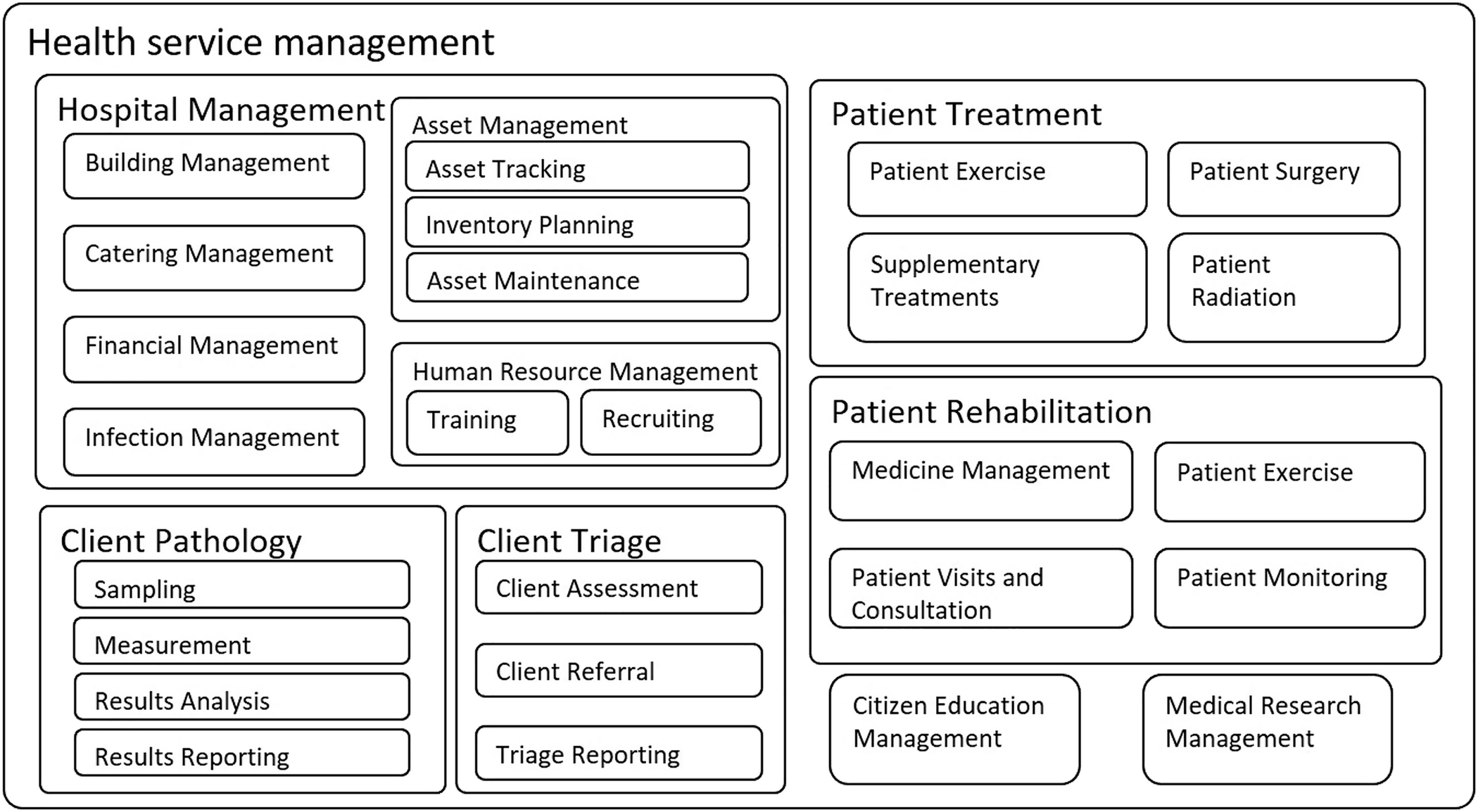Chatper 2.2 - Business Capability Mapping Guide
On this page
- Business Capabilities
- Understanding Business Capabilities
- The Role of Business Capabilities in Managing Application Landscapes
- Comparing Business Capabilities and Software Applications
- Capabilities in the Context of a Logistics Company
- Common Capabilities Across Corporations
- Business-Centric Nature of Capabilities
- Stability and Organizational Neutrality
- Common Pitfalls in Defining Business Capabilities
- The Hierarchical Structure of Capability Maps
- The Growing Importance of Capabilities
- Starting Points for Creating Capability Maps
- Utilizing Reference Architectures in Capability Mapping
Business Capabilities
Understanding Business Capabilities
Business capabilities are foundational elements within the business architecture, serving as functional abstractions that describe what a business does—distinct from how it does it. Unlike IT-specific concepts, business capabilities are strategically aligned with the company’s objectives and are measured by Key Performance Indicators (KPIs). They maintain a close relationship with both the business model and the processes of the organization.
- Definition 2.1 (Business Capability): A functional abstraction within the business architecture, focusing on what the business accomplishes without delving into the specifics of activity execution.
The Role of Business Capabilities in Managing Application Landscapes
Business capabilities and software applications share several similarities. Both are abstractions—capabilities in business architecture and applications in software—that focus on the existence of functions rather than their implementation details. They aim to eliminate redundancies and provide stable functions that contribute to business outcomes, leveraging resources to transform input into output.

Comparing Business Capabilities and Software Applications
Software applications, like business capabilities, are designed for efficiency and future adaptability. They encapsulate functionality that is intended to be reusable and can be extended to accommodate future use cases.
- Applications and capabilities both input and output data, requiring resources such as hardware, software, and user interaction.
- Stability over time is crucial for both, as frequent changes can introduce complexity and errors.
Capabilities in the Context of a Logistics Company
An example capability map for a hypothetical logistics company demonstrates core business capabilities such as Logistics Operations and Network Management, in addition to Corporate-Level and Support capabilities including Strategy Development, Corporate Planning, and Partner Management.

Common Capabilities Across Corporations
Universal capabilities found in most corporations encompass Human Resources (HR), Finance, and Information Management, which enable the core functions of the business by providing necessary support services.
Business-Centric Nature of Capabilities
Business capabilities are inherently business-centric and are employed for planning application landscapes in line with business requirements.

- Outlines essential properties of a capability.
- Avoid IT-centric views when defining capability maps—collaborate with business experts using business language.
Stability and Organizational Neutrality
Business capabilities should be stable over time to serve as a reliable foundation for IT landscape planning without frequent changes, which could render plans obsolete.
- Focus on what functions are performed rather than who performs them or how, to avoid organizational bias.
Common Pitfalls in Defining Business Capabilities
Defining business capabilities should not be driven by the existence of IT applications; instead, capabilities should guide the development of the application landscape.
The Hierarchical Structure of Capability Maps
Real-life capability maps are typically hierarchical, with capabilities decomposable into sub-capabilities.
Guidelines for creating capability maps:
- Each sub-capability requires a clear description.
- Visual hierarchy indicates sub-capability relationships.
- Sub-capabilities should be unique and non-overlapping.
- Aim for at least two sub-capabilities when decomposing.
- Limit the hierarchy to three or four levels to maintain manageability.
The Growing Importance of Capabilities
In recent years, business capabilities have become a key mechanism for high-level business understanding and governance, serving as a foundation for managing the application landscape.
Starting Points for Creating Capability Maps
When new to a company, one can use existing business process maps or reference models like the Process Classification Framework (PCF) by APQC to draft a capability map.

- Leverage business process maps, business objects, and reference architectures to inform capability map creation.
- Utilize the PCF for standardization, completeness checks, and gap identification.
Utilizing Reference Architectures in Capability Mapping
Reference architectures provide industry-specific capability maps that can be adapted for similar companies, promoting efficiency and standardization.
- Reference models, like PCF, can be instrumental in defining business capabilities and ensuring alignment with industry standards.